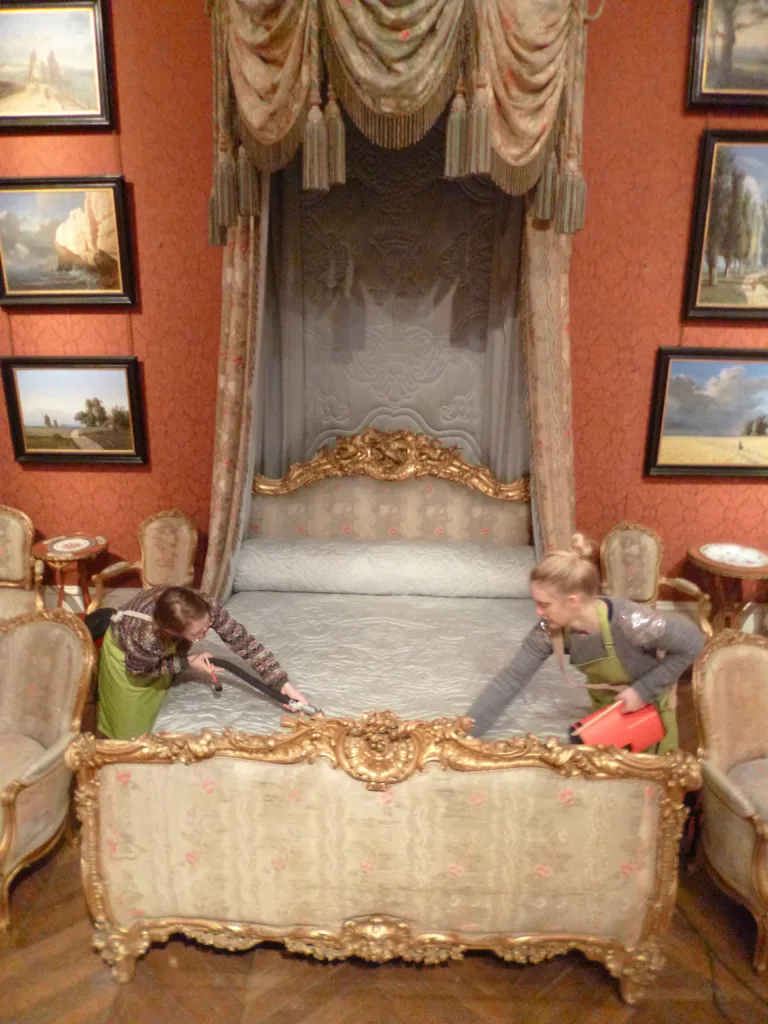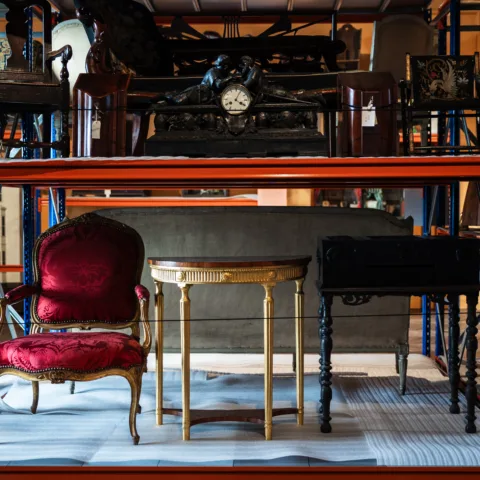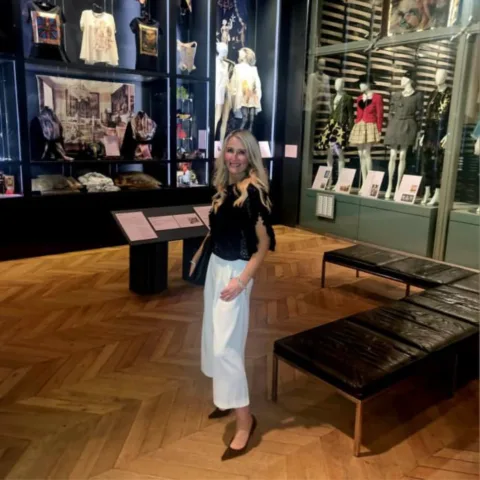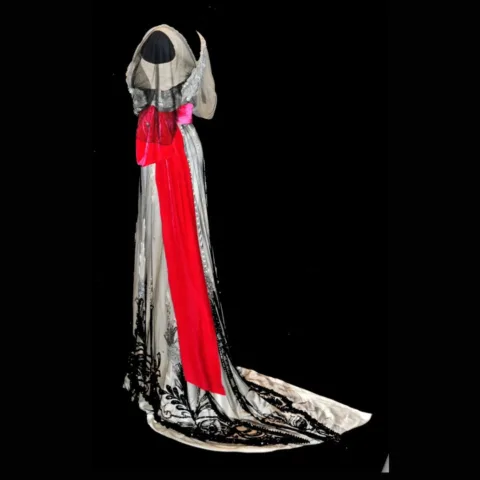The Bowes Museum Blog

Keeping It Clean In Josephine’s Bedroom

Some days being a textile conservator is just not that glamorous and the biannual clean of Josephine Bowes’ living quarters are some such days. While this glorified hoovering may not have the same universal appeal as putting her party frocks on display, it is, never the less, an extremely satisfying and necessary task when you look a little closer at what it entails and what can be achieved.

Surface Cleaning Josephine Bowes’ Bed
Many of the objects in The Bowes Museum are on open display and therefore require a regular programme of surface cleaning. Dust can be extremely abrasive to textile objects, absorbs pollutants in the atmosphere, becomes engrained into the fabric itself causing staining, provides a food source for pests and is, we can all agree, fairly unsightly. A considerable amount of dust comes off the body and clothes of people in the museum so it stands to reason that busier spaces and lower surfaces (below shoulder height) will require a more frequent surface cleaning timetable. That being said, there does seem to be a certain amount of mystery attached to dust deposition; it changes with the seasons and is effected by air circulation, ventilation and many other unfathomable unknowns, so how often to surface clean is constantly under debate and must be assigned on a case by case basis. Cleaning too frequently has its own disadvantages as there will likely be a very minor, yet unavoidable amount of fibre loss when vacuuming historic textiles.

Left: Surface Cleaning Dining Chairs, Right: Dust Removed From a Single Chair
This month Kate and I assisted in surface cleaning of the textile elements of Josephine’s bedroom and dining room under the supervision of a preventive conservator. The textiles were last cleaned six months previously but due to increased visitor numbers resulting from the popularity of Yves Saint Laurent: Style Is Eternal we expected a fair amount of dust. We used a series of soft brushes in combination with vacuum suction to dislodge dust particles, and tracked our progress by securing small samples of muslin over the nozzle to keep an eye on our dust-to-fibre ratio. The high dust levels encouraged us to start a monitoring programme by recording the date and the location of dust samples taken from a number of chairs located around the room.

Dining Room Showing Variation in Dust Distribution Collected From Chairs
Samples have now been filed with a record of visitor numbers over the period since the room was last cleaned. By repeating the same process every six months the museum can start to build up a picture of how visitor numbers and seasonal variations effect dust levels and tailor their cleaning schedule accordingly. As with many aspects of conservation, it is all about playing the long game. Glam it is not, but I would like to think that we have set a plan in motion which could really be of benefit to the museum long after our year as interns comes to an end.

Dust Close-Up From Dining Room Chair
Jamie Robinson, ICON/HLF Textiles Conservation Intern
![]()







